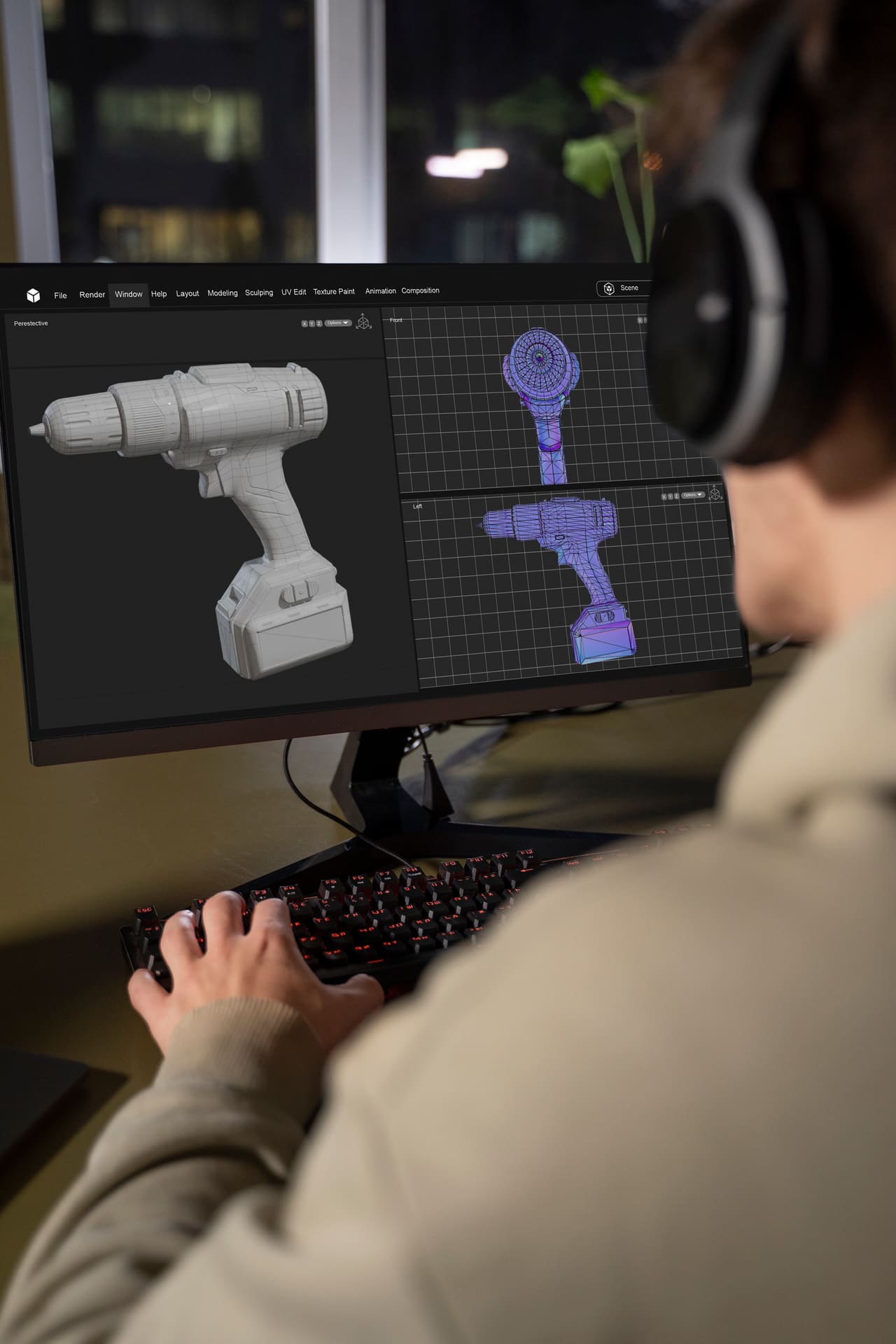Product Design vs Product Engineering: What’s the Difference?
2025.11.17
Product development typically moves through a sequence of product design → product engineering → prototyping → mass production. However, if the difference between “design” and “engineering” is not clearly understood, teams often face repeated revisions, delayed schedules, and rising development costs.
Product design focuses on the appearance, usability, and overall experience of the product, while product engineering defines the internal structure and mechanisms that enable the product to function reliably and be manufactured at scale.
At Creallo, we bridge these two stages through AI-driven 3D design analysis (DFM) and rapid prototyping using 3D printing services, CNC machining services and vacuum casting, enabling faster validation and more efficient development cycles.
Roles of Product Design and Product Engineering
A. Product Design
Product design defines the product’s exterior form, user experience, and visual identity. This includes sketching, concept development, 3D modeling, and CMF (color, material, finish) decisions. Design consistency and user-centric thinking are key.
Typical deliverables include:
- Industrial design (ID)
- UI/UX layout
- Concept models and CMF documentation
B. Product Engineering
Product engineering builds the mechanisms and structure that allow the product to work reliably. This includes component layout, mechanical design, tolerancing, durability checks, manufacturability analysis, and assembly processes.
Typical deliverables include:
- Structural design drawings
- Part and assembly drawings
- Mechanical/kinematic design files
The Difference Between Product Design and Product Engineering

Product design focuses on what users see, touch, and experience, whereas product engineering focuses on how the product works, interacts, and survives real-world use.
Design drives market differentiation, brand value, and user appeal. Engineering ensures reliability, performance, safety, and production feasibility.
Both must work together. A visually appealing design may attract customers, but without proper engineering, product reliability and user trust are quickly lost.
The most successful development outcomes come from close collaboration between design and engineering teams throughout the process.
Why Product Design Matters

Product design plays a central role in defining the visual and emotional impression of the product.
A. Visual Appeal
Strong design enhances product attractiveness and increases purchase motivation.
B. Brand Identity
Recognizable CMF patterns and shapes strengthen brand perception and loyalty.
C. User Experience
Intuitive and user-friendly layouts improve usability and customer satisfaction.
D. Market Competitiveness
Distinctive design differentiates your product from competitors.
E. Manufacturing Efficiency
Design optimized for manufacturing helps reduce rework, part count, and production costs.
Why Product Engineering Matters

Product engineering directly impacts the product’s actual performance and manufacturability.
A. Functionality and Performance
Optimized mechanical design ensures smooth operation and reliable performance.
B. Durability and Reliability
Structural integrity and proper material selection extend product lifespan and reduce maintenance.
C. Productivity and Efficiency
Engineering that considers manufacturability simplifies production and supports automation.
D. Safety and Ergonomics
Proper engineering ensures safe operation and user-friendly interactions.
E. Innovation and Differentiation
New mechanisms and engineering solutions create strong product advantages in the market.
Creallo’s Role in the Product Design–Engineering Process
Creallo closes the gap between design and engineering by providing an integrated workflow from early development to prototyping and pre-production.
A. AI-Powered 3D Design Analysis (DFM)
Upload your 3D file and our AI instantly analyzes manufacturability. This reduces unnecessary redesigns and identifies issues early in the engineering stage.
Typical checks include:
- Insufficient wall thickness
- Excessive undercuts
- CNC-unfriendly geometries
- Assembly interference
B. High-Quality Prototyping Support
• SLA 3D Printing
High-resolution surfaces ideal for early design reviews and appearance models.
• SLS 3D Printing
Durable nylon parts suitable for hinges, snap-fits, and assembly testing.
• CNC Machining Service
AL6061, AL7075, stainless steel, and other production-grade materials for precise fit/functional testing.
• Vacuum Casting
Ideal for verifying color, texture, and material behavior before mass production.
All prototyping processes can be executed within Creallo, significantly shortening development time.
Benefits include:
- Dedicated account management
- ISO 9001-based quality control
- Consistent quality through manufacturing data tracking
C. Accurate Cost Prediction
Check estimated costs for each manufacturing method directly during development.
This simplifies budgeting, comparing multiple prototype iterations, and selecting the optimal process.
D. Seamless Collaboration Between Design, Engineering, and Production
Creallo enables cross-functional teamwork through:
- A unified 3D data review environment
- Process recommendations tailored to part intent (aesthetic/functional/assembly)
- Guidance on tolerances, post-processing, and manufacturability
This ensures both design intent and engineering requirements are fully realized in the prototype.
Conclusion
Product design and product engineering each play critical but different roles in successful product development.
To achieve high product quality, both must work together from the earliest phases.
Creallo supports this entire workflow through AI-powered DFM, high-quality 3D printing services, CNC machining services, and vacuum casting, enabling a fast and reliable path from design to prototype to production.
Experience faster, smarter product development with Creallo’s online manufacturing platform.
